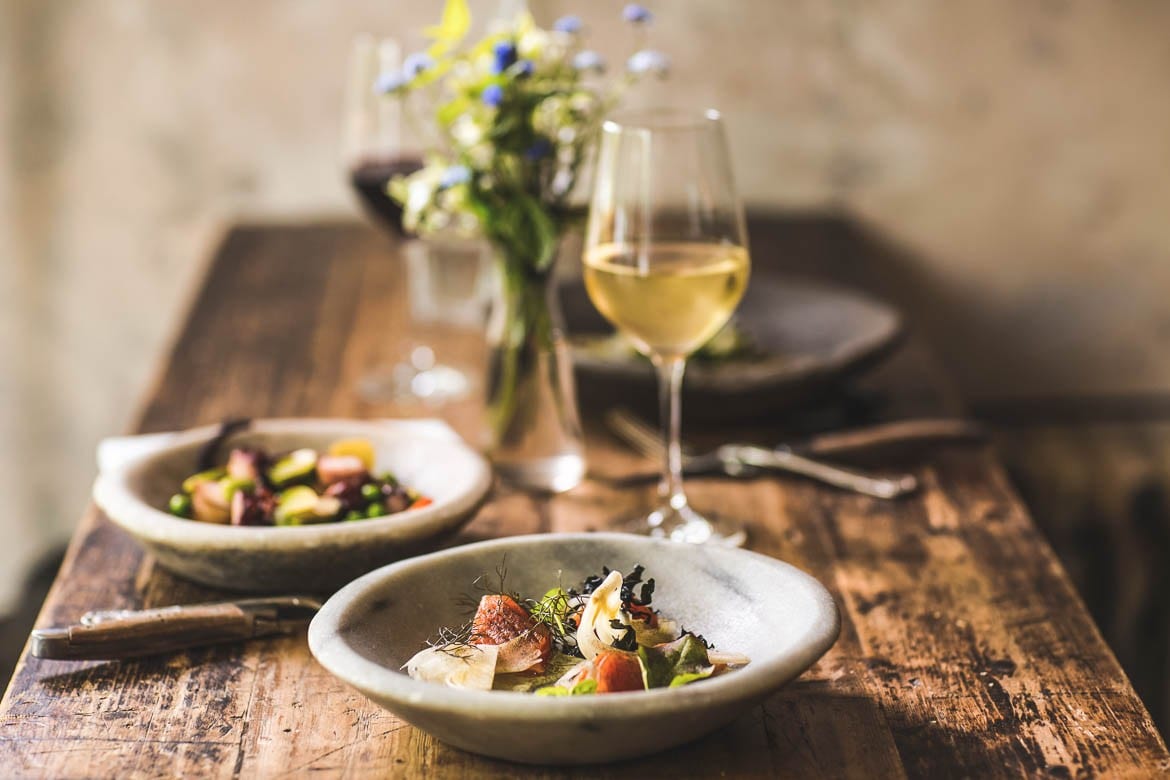Eating is probably one of the most pleasant activities in our lives. Why not accompany it with a glass of vinted wine? As excellent as it sounds, it’s not so easy unless you’re a chef in a posh restaurant. It’s worth a try, though. This way, you’ll definitely surprise your partner at a romantic dinner. Preparing a delicious dish at home and pairing it with a proper wine can satisfy every gourmet’s palate. And from here there’s only one step to love, quoting a famous saying: “The way to a man’s heart is through his stomach.”
But to do it rightly, you’ll need some knowledge about different types of wine and their correspondence with your favourite meals. You don’t have to be a sommelier to know some of the mysteries hidden deep in underground wineries. It’ll be enough if you familiarize yourself with some basic facts about how to combine wine flavours with the main course.
Follow Your Liking
With such a rich variety of wines available, it may be indeed quite hard to choose the best bottle of a red drink. The most important is, however, to stick to your and your guest’s liking. Consider whether you prefer red, rose or white wine. Then, think about the intensity. Some people enjoy drinking only dry wines. Others instead won’t drink anything other than sweet or at least semi-sweet wine. To help you choose the most suitable wine for your tastes, you can make use of online wineries, like Acker Wines. Choosing your favourite wine is always the best tip. Even if it doesn’t fit the bill, you’ll still be enjoying the flavour of wine and food separately.
Find Balance
Another piece of advice for you concerns the balance. It’s a keyword here. Like in life, try to match something that suits each other very well. For that reason, consider both the weight and quality of food. The wine and the dish should be equal partners; one can’t dominate the other. Hearty dishes require a hearty wine. Thus, try to evaluate the fatness of the meal and the sauce- a contributing ingredient, as well as salad. For example, fried chicken will be much heavier than poached.
Regarding wines, you should assess the colour, grape variety and alcohol content. Wines with less than 12 percent alcohol are regarded as lighter, whereas these with more than 14 percent- heavier.
Pair Similar Flavours
Once you establish your personal preferences and balance between food and wine, it’s time to pair similar flavours. It’s the simplest rule ever. If you’re preparing a pasta dish with a fresh sauce, you can go for a citrusy Sauvignon Blanc. A smoked steak, instead, may nicely correspond with Cabernet Sauvignon. How would you know that? By identifying the most characteristic element of your dish. However, it doesn’t necessarily have to be meat. It’s very often sauce, seasoning or cooking method.
Putting many acidic ingredients into your food, such as lemon or vinegar, can benefit high-acidic wines since they become softer. If you’ve, instead, prepared something sweet, on no account, you should choose a dry wine. Why? Simply because it’ll taste sour. Such a dish will be tastier when served with a bit of sweetness in the wine.
Talking about wine, you should also know one of the wine ingredients- tannins, which interacts with fats, salty and spicy food. Rich and fatty dishes, like a steak, diminish the sense of tannins, making intense wines smoother. Nevertheless, salty dishes considerably increase it, making red wines harsh and astringent to drink. Spicy flavours also badly affect tannins and high alcohol so that your wine seems hotter. That’s why, in this case, it’s better to choose fruity or semi-sweet wines.
Wine vs. Meat
When it comes to meat, red meat should be, generally, paired with dry, tannic wines. Instead, lighter types of meat, such as poultry, pork or fish, taste better with white wines. But here, you should primarily look at the sauce you’re serving to the meat since it adds the most intense flavour to the whole dish. If you use the wine as the base of your sauce, you don’t have to think long. The answer is just in front of you- serve the wine you’ve added to the sauce.
Ask a sommelier for advice
If all these tips are still too overwhelming for you and you don’t think you’ll manage to choose the best wine for your meal on your own, you can always ask a sommelier for advice. Buying wine in a local winery, and not in the corner store, you’ll have the chance of talking to somebody who really knows the stuff. They should give you a hint about what kind of wine will ideally accompany your food so that you could shock every wine connoisseur.
The world of wine can be an exciting experience for everyone. Even if you aren’t a wine lover and you prefer cooking over drinking, from now on, you should be able to match some wines to your primary meals. No one will even notice that you aren’t an expert.








